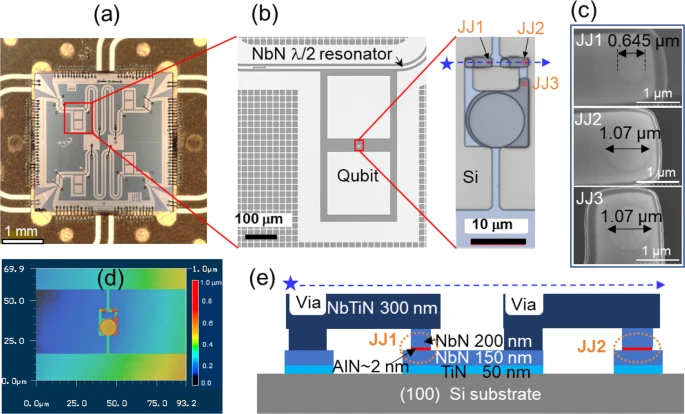Science Daily September 20, 2021
Researchers in Japan have developed superconducting qubits based on NbN/AlN/NbN epitaxial Josephson junctions on silicon substrates which promise to overcome the drawbacks of qubits based on Al/AlOx/Al junctions. The all-nitride qubits have great advantages such as chemical stability against oxidation, resulting in fewer two-level fluctuators, feasibility for epitaxial tunnel barriers that reduce energy relaxation and dephasing, and a larger superconducting gap of ~5.2 meV for NbN, compared to ~0.3 meV for aluminum, which suppresses the excitation of quasiparticles. By replacing conventional MgO by a silicon substrate with a TiN buffer layer for epitaxial growth of nitride junctions, they have demonstrated a qubit energy relaxation time T1=16.3μs and a spin-echo dephasing time T2=21.5μs. These improvements are explained by the reduced dielectric loss compared to the previously reported T1≈T2≈0.5μs of NbN-based qubits on MgO substrates. According to the researchers the results are an important step towards constructing a new platform for superconducting quantum hardware…read more. Open Access TECHNICAL ARTICLE

jAll-nitride C-shunt flux qubit consisting of epitaxially grown NbN/AlN/NbN Josephson junctions on Si substrate. Credit: Communications Materials volume 2, Article number: 98 (2021)